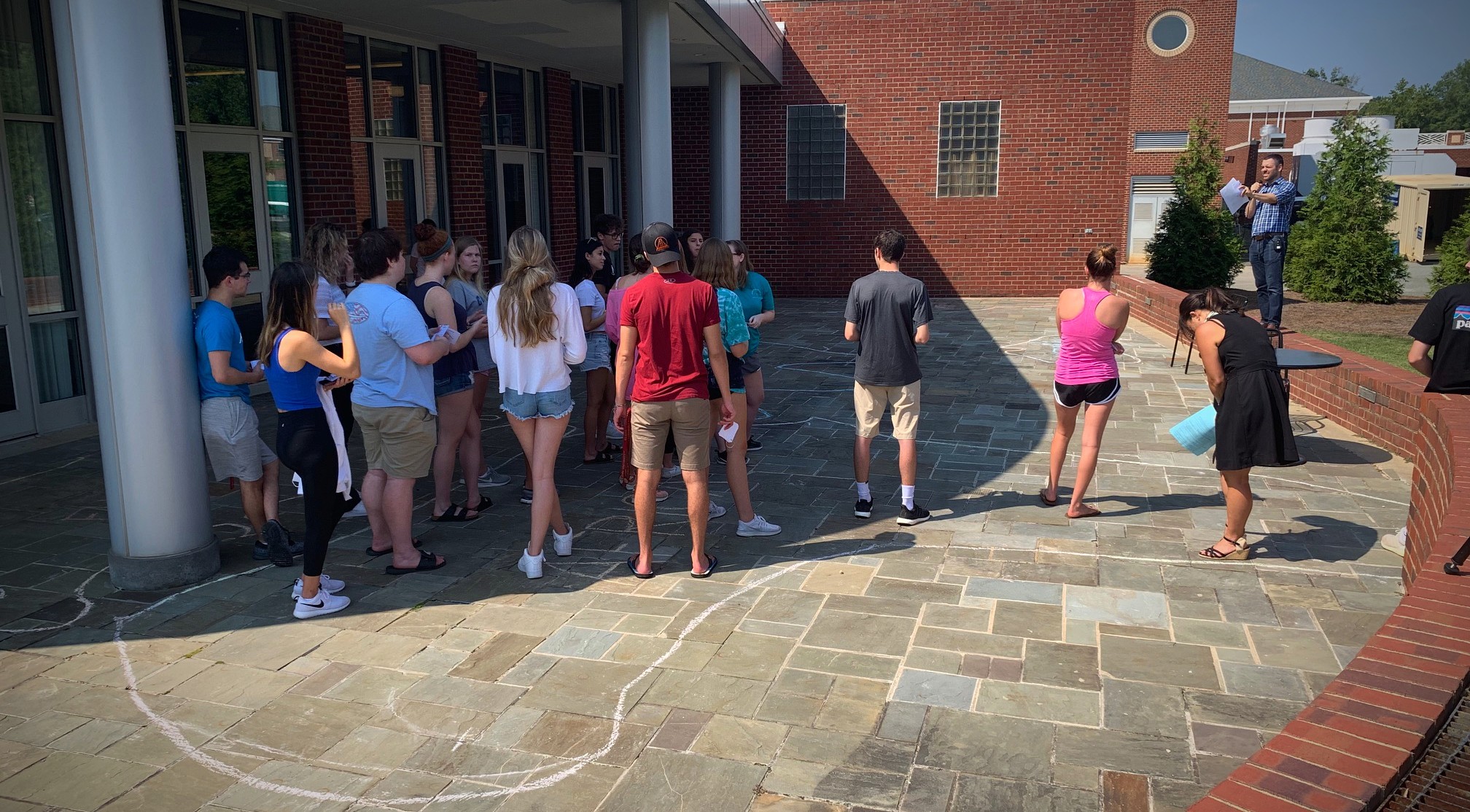The Elon Biology Department hosted two days of demonstrations, reenacting the prehistoric human migrations from Africa 100,000 years ago, to help supplement the first-year common reading selection "Futureface," by author and journalist Alex Wagner.
First-year students traveled 100,000 years into the past to get a better understanding of DNA and ethnicity and open meaningful dialogue about the Elon Core Curriculum common reading assignment.
“This is a great way for students to learn their history,” said Dave Gammon, professor of biology. “Every one of us, regardless of race or ethnicity, we’re all African, if you go back 100,000 years.”
Gammon and members of the Biology Department made this point in a series of demonstrations outside the Moseley Center Wednesday and Thursday.

In the sessions, professors illustrated prehistoric human migrations from Africa. Using sidewalk chalk to draw six populated continents, faculty assigned students different ancestral lineages and had them travel across the planet over a 100,000-year period. The demonstrations spanned from the first migration from Africa in which humans traveled to Australia, by way of middle eastern and southern Asia, 70,000 years ago. They concluded with humans migrating to South America in 1491.
“Technologically and on a population level, it was such a different world back then,” Gammon said. “You have to imagine a line of people walking across thousands of miles to travel across the entire world, and that is all of our ancestry: huge movements of people just walking in the heat of the Sun or the cold of the winter wherever they went. That’s our past.”
The demonstration also examined the ways ancestry and genetic markers moved around the world during the prehistoric migrations.
“I thought [the demonstration] was cool,” said Lauren Rouse ’23. “It’s way better being out and moving around, rather than having the professor just showing us a diagram. It was way more engaging to stand up and do it.”
The goal was to help students supplement their common reading “Futureface,” a memoir by author and journalist Alex Wagner. In the book, Wagner discusses identity and belonging through an examination of her parents’ racial and ethnic backgrounds and immigration experiences. Wagner challenges readers to consider the questions of who we are, where we belong and who decides.
“About a quarter or a third of the book is all about DNA,” Gammon said. “To understand DNA without talking about biology is kind of difficult. We thought this was a great opportunity for us to do meaningful science outreach to the students of Elon.”
Gammon created the demonstrations with Lecturer in Biology Dave Parker. Also helping to lead the project were Linda Niedziela, chair of the Biology Department; Tonya Train, associate professor of biology; Jen Uno, associate professor of biology; and Jessica Merricks, assistant professor of biology.
In one of the sessions, Parker described the many similarities in human DNA, explaining humans are 99.9 percent similar on a molecular level.
“You have enormous amounts of DNA and genetic information in your bodies,” he told students Wednesday. “But, with that being said, it’s interesting to note that genetically speaking, we are all very similar.”

The Common Reading assignment is given to all incoming students each academic year. The reading marks the beginning of the Elon Core Curriculum, the shared courses and experiences that put knowledge into practice and enable the integration of learning across the disciplines.
The Elon Common Reading Program challenges students, faculty and staff to examine themselves and the local and global worlds they inhabit through reading. The readings and related discussions aim not only to encourage critical reflection about important issues but also to invite consideration of how our individual actions affect these issues.
Naeemah Clark, professor of cinema and television arts and coordinator for diversity and inclusion in the Elon Core Curriculum, says the demonstrations were the perfect way to start conversations related to this year’s common reading.
“For me, when [the biology faculty] offered this, I thought it was a great way for students to connect to the common reading in a different way, but then, to also talk about the fact that our genetics are not all that different,” Clark said. “I thought it was a conversation that our students needed to be having, and I’m so glad they were offered this opportunity.”



